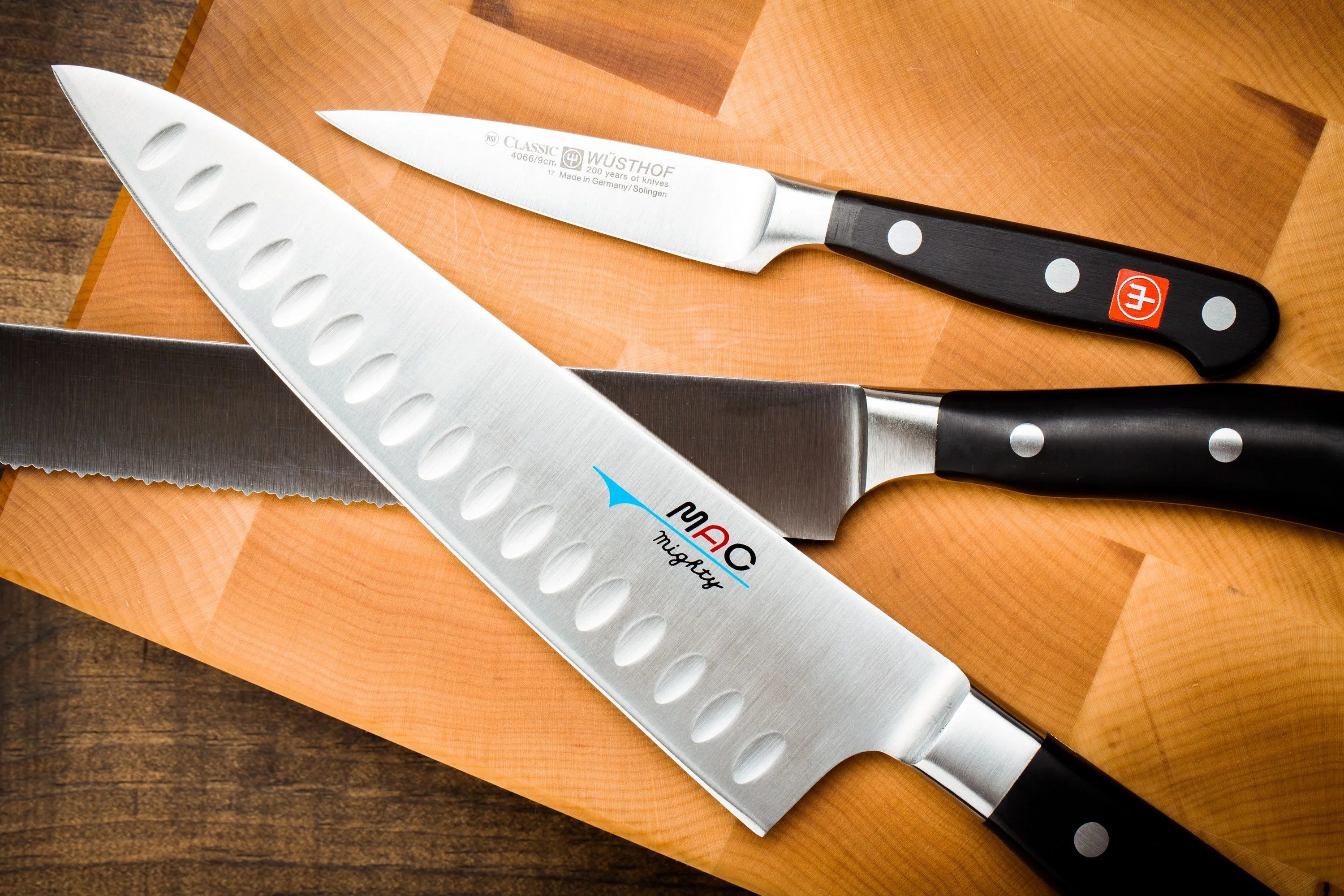Prospective knife shoppers spend time thinking about a knife’s blade more than anything else. But one of the most important considerations to buying a knife has to do with something you might not even see. Tang — not the neon orange drink of your youth — plays an important factor in the construction, price and usability of a chef’s knife. So what’s the thang with knife tang?
What Is Knife Tang?
Tang refers to the part of the knife blade that extends into the handle. Tang plays an important factor in product costs, as well as how a knife performs with constant use. A knife can either be full tang or partial tang. This is how the two compare.
Full Tang
A full tang knife’s blade extends fully through the handle both in length and width. Its handle is typically sandwiched between two pieces of wood, plastic or other material, revealing a strip of the tang. A full tang knife may also have a hidden tang in which the handle material fully encompasses the blade handle, hiding the steel.
Full tang knives are weightier than partial tang knives since the entire knife is made of steel. The knife is therefore more balanced, which also makes it easier to chop for extended periods of time. Because a full tang knife has a heavier handle, you don’t have to exert as much force to cut through denser food. Then there’s a matter of cost — because a full tang knife is fully made of steel, you’ll be paying more for that extra material.
